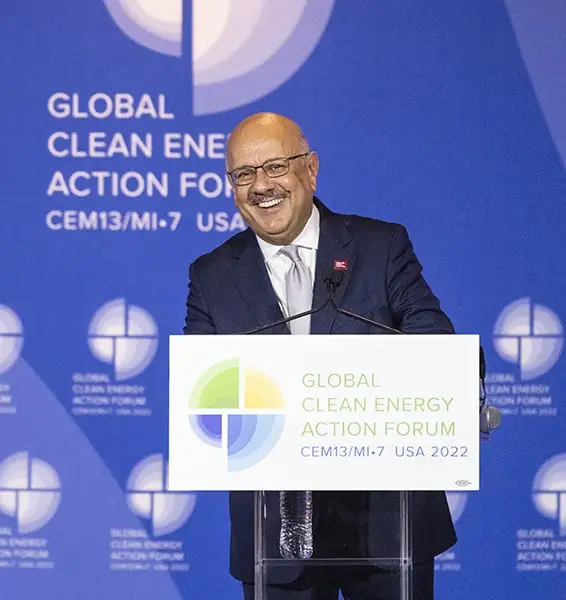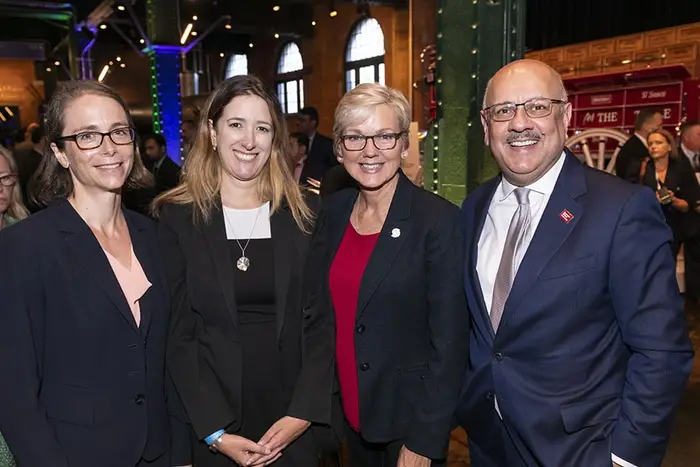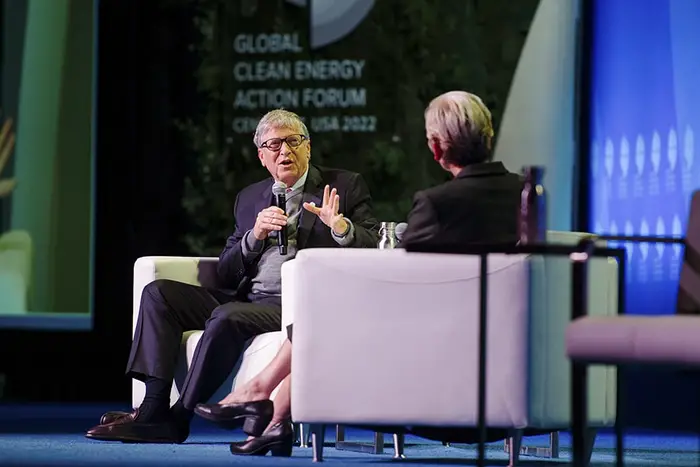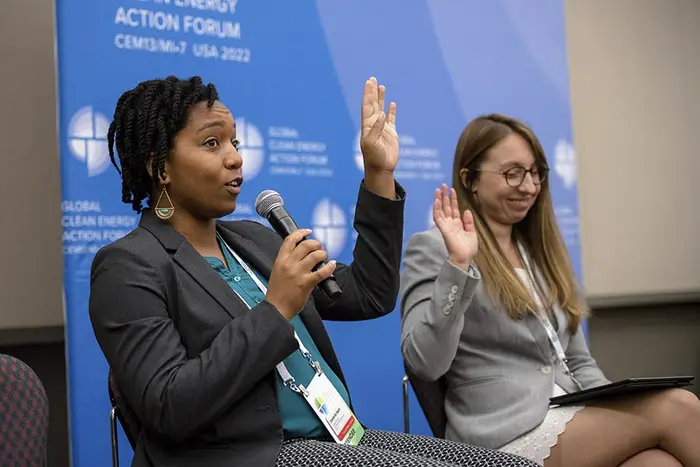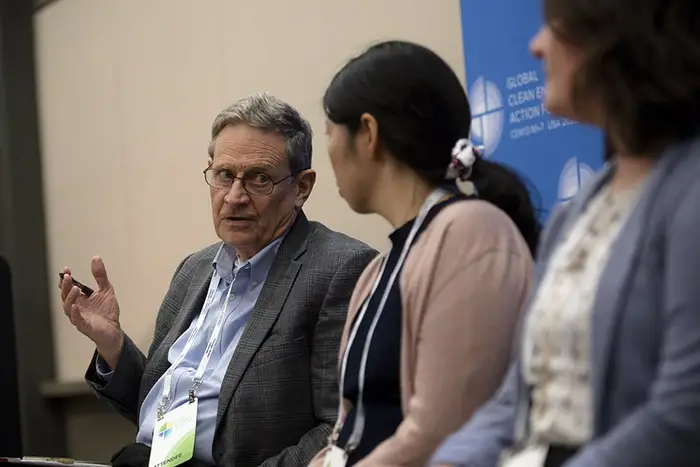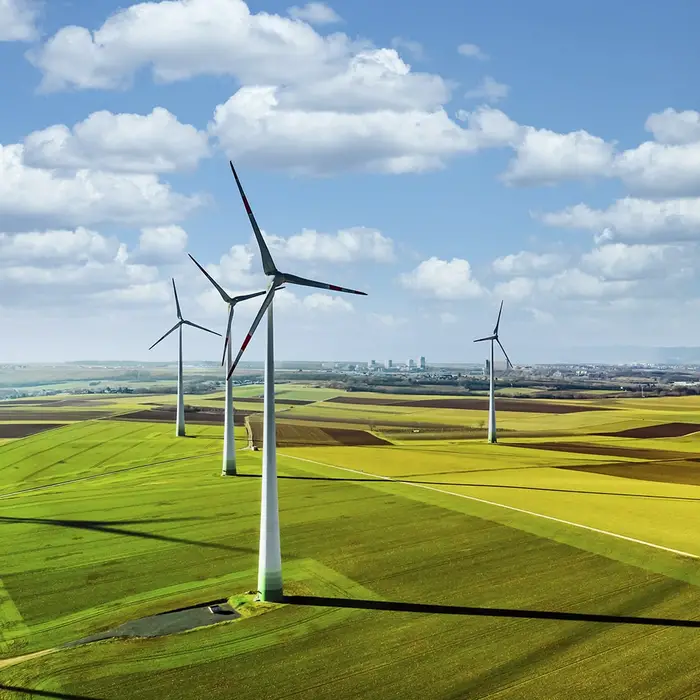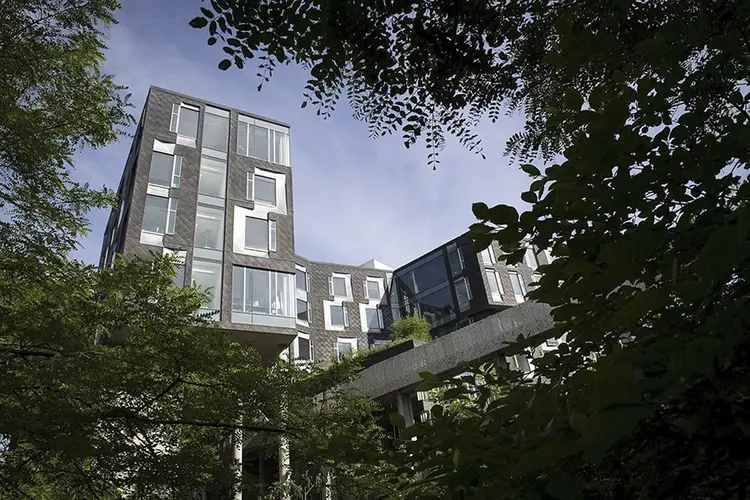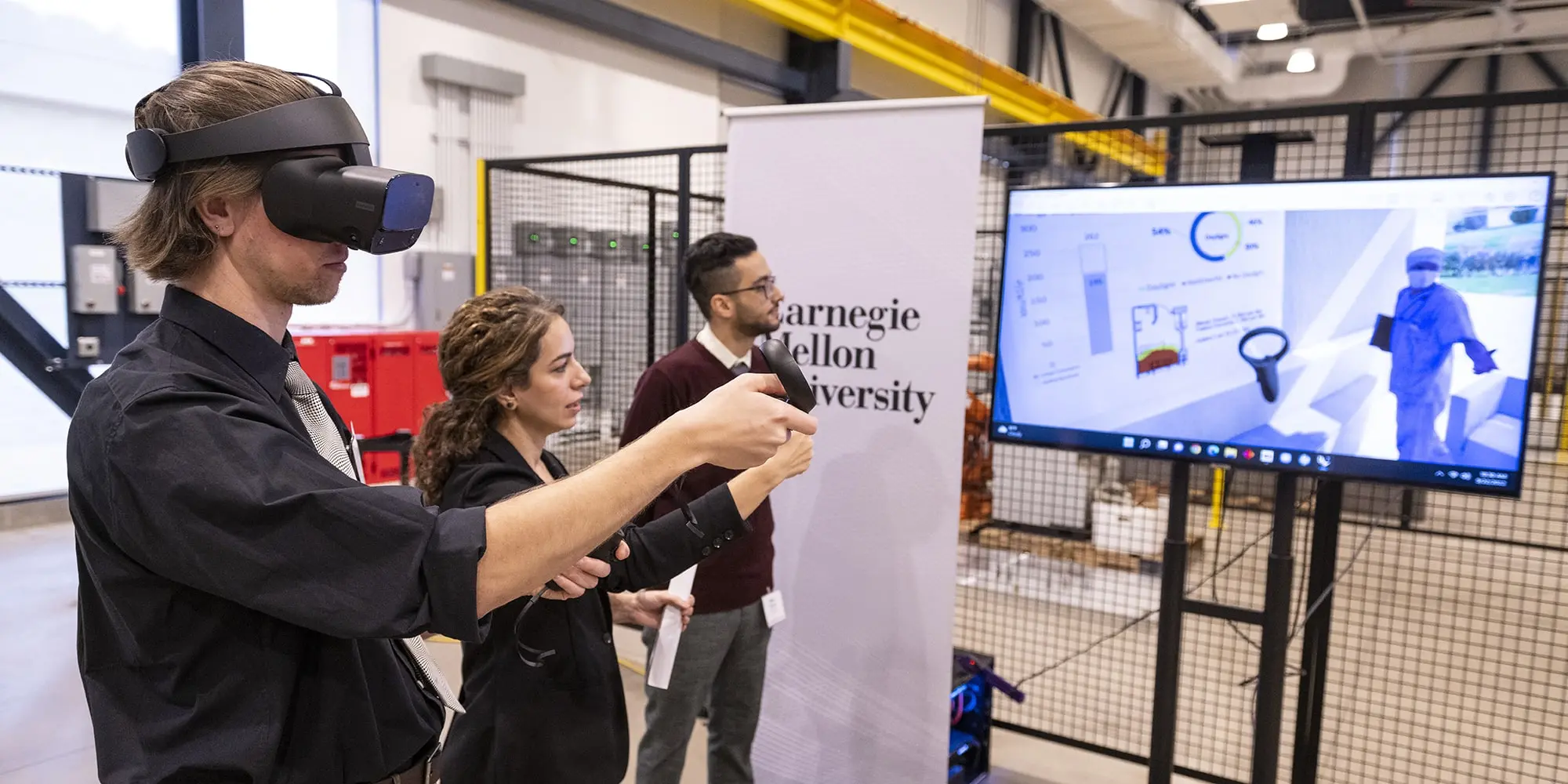
Guiding the Clean Energy Transition
Media Inquiries
There was notable excitement around the opening of the Global Clean Energy Action Forum(opens in new window) (GCEAF) Wednesday evening, Sept. 21. The three-day event drew members of the global energy community to Pittsburgh to share their ideas on how to move toward a clean and sustainable future. Carnegie Mellon University was a co-sponsor with the Department of Energy(opens in new window) (DOE) in hosting GCEAF.
Carnegie Mellon University President Farnam Jahanian(opens in new window) welcomed hundreds of local and global top energy officials, CEOs and innovators to Pittsburgh at a reception held at the Heinz History Center. He recognized his fellow co-chairs on the Pittsburgh-based host committee that worked with the DOE to organize the event: Allegheny County Executive Rich Fitzgerald(opens in new window), Pittsburgh Mayor Ed Gainey(opens in new window) and Allegheny Conference CEO Stefani Pashman(opens in new window).
"The imperative facing us could not be more urgent, and I would argue that, at this pivotal moment, there is no more fitting or inspiring place to hold these conversations than Pittsburgh," Jahanian said. "Over the past three decades, this region has reinvented itself as the center of a new economy — and a model for the power of innovation."
This first-ever event featured a high-level plenary, topical roundtables with energy and science ministers from 31 countries, CEOs and experts, expert panel discussions, technology demonstrations and pitches, and other activities, all focused on how to deploy clean energy technologies.
From left, CMU's Associate Professor Valerie Karplus and Professor Paulina Jaramillo; U.S. Secretary of Energy Jennifer Granholm; and CMU President Farnam Jahanian during the opening reception for the Global Clean Energy Action Forum on Wednesday Sept. 21, 2022, at the Senator John Heinz History Museum.
Bill Gates, co-chair of the Bill & Melinda Gates Foundation and founder of Breakthrough Energy, speaks with U.S. Secretary of Energy Jennifer Granholm during a session titled "Fireside Chat with Bill Gates: Priorities for Technological Innovation." Image credit: Michael Will
Before the public program kicked off Thursday afternoon, GCEAF attendees visited Mill 19(opens in new window), a former steel mill that now serves as a state-of-the-art research facility shaping the future of advanced manufacturing and sustainable practices. As part of the tour, guests attended several demonstrations related to manufacturing and sustainable practices:
- Azadeh Sawyer(opens in new window), assistant professor in building technology in CMU's School of Architecture(opens in new window), showed how she's using virtual reality to promote green building practices, allowing clients to explore how different design elements impact the user experience and energy efficiency.
- Sandra DeVincent Wolf(opens in new window), executive director of CMU's Manufacturing Futures Institute(opens in new window) (MFI), showcased a robotic wire arc additive manufacturing process that uses less energy and reduces waste and costs compared to traditional manufacturing methods.
- The Advanced Robotics for Manufacturing(opens in new window) (ARM) team showed participants how a robotic arm can quickly and efficiently inspect complex turbine blades for defects.
A panel of experts and venture investors heard from Pittsburgh-based energy and climate technology startups pitching their innovative technologies. Hosted by the DOE's Office of Technology Transitions, many of the entities taking part were spun out of CMU and/or led by CMU graduates or faculty. They included:
- CorePower Magnetics, a company using advanced materials and manufacturing to create finished power electronics components (inductors and transformers) to operate with increased temperature stability.
- Farm to Flame Energy, a biomass solution that allows for the burning of several agricultural wastes in a smokeless and odorless manner.
- LumiShield, co-founded by Hunaid Nulwala, who at the time was an assistant research professor of chemistry at CMU, which has developed a process to stop corrosion without relying on toxic solvents.
- Integrated Silicon Technologies, a company that has developed an innovative continuous process to reduce the cost of silicon-based solar electricity by a factor of two.
Several CMU faculty members, alumni, students and administrators took part in panels during both days of GCEAF.
CMU Professor of Engineering and Public Policy (EPP) and Co-Director of the Green Design Institute Paulina Jaramillo(opens in new window) led a panel discussion on the recently launched Open Energy Outlook(opens in new window) (OEO), an initiative that aims to examine U.S. energy futures to inform energy and climate policy efforts by applying the gold standards of policy-focused academic modeling, maximizing transparency and building a networked community. Katie Jordan, a Ph.D. student in EPP, presented the team's methodology and findings. The OEO is an initiative of the Wilton E. Scott Institute for Energy Innovation(opens in new window) at CMU in partnership with North Carolina State University and funding from the Sloan Foundation.
Valerie Karplus(opens in new window), associate professor in EPP, took part in a session entitled "A High Road Energy Transition: Ensuring Fairness for U.S. Workers and Communities." The conversation included labor and nongovernmental organization leaders, all recognizing that different parts of the world are dealing with their clean energy transitions on different timelines. Karplus referenced the work of the Roosevelt Project(opens in new window), a research effort that examined the transitional challenges facing the Southwestern Pennsylvania region in making the transition to a future with net-zero greenhouse gas emissions as an effort to examine community impacts of decarbonization policies.
Global Clean Energy Action Forum attendees were invited to tour Mill 19, CMU's workspace where innovators partner with industry pioneers to apply digital innovation, advanced manufacturing technology, and human intelligence to the production of the future. @GCEAF_USA #GCEAF pic.twitter.com/yYbuIvT1NQ
— CMU College of Engineering (@CMUEngineering) September 23, 2022
Destenie Nock, left, speaks during a panel titled "Systems Thinking for a Rapid and Just Net-Zero Transition."
M. Granger Morgan speaks on a panel titled "Enhancing Electric Power Resilience in the Face of Extreme Events."
Destenie Nock(opens in new window), assistant professor in EPP and Civil and Environmental Engineering, participated in an expert panel discussion on what is necessary to reach net-zero emissions and the ways systems methods can enable a rapid and equitable energy transition for all. Nock encouraged the panel to consider ways to create an equitable, sustainable and low-cost energy future all at once, and not leave consideration on how to make energy equitable until the very end of the modeling process.
M. Granger Morgan(opens in new window), the Hamerschlag University Professor of Engineering, joined two of his former Ph.D. students, Sunhee Baik and Luke Lavin, and one current Ph.D. student, Angelena Bohman(opens in new window), at a side presentation to discuss power system resilience in the face of extreme events like terrorist attacks, or events occurring in nature as the result of climate change. Baik, now with the Lawrence Berkeley National Laboratory, talked about the problem of estimating the economic and societal costs of large outages of long duration, while Lavin, now with the National Renewable Energy Laboratory, presented his research conducted at CMU on resource adequacy implications of temperature-dependent electric generator availability. Bohman, who will defend her thesis in December, shared her research on strategies for and efficacy of enhancing the resilience of power systems.
On the final morning of GCEAF, President Jahanian hosted a fireside chat with U.S. Sen. Joe Manchin (D-W.Va.), that focused on how to protect workers at the center of the transition to a clean and sustainable energy future and the prospects for enacting permitting reform as a means to narrow the timeframe of developing new energy technologies and helping America better compete on the global stage. Jahanian concluded, "Ultimately, the energy transition has to be centered around people, which means bringing meaningful opportunities to our communities — including good-paying jobs, affordable energy and a better quality of life — especially for those who have been most impacted by environmental harm from legacy industries."
